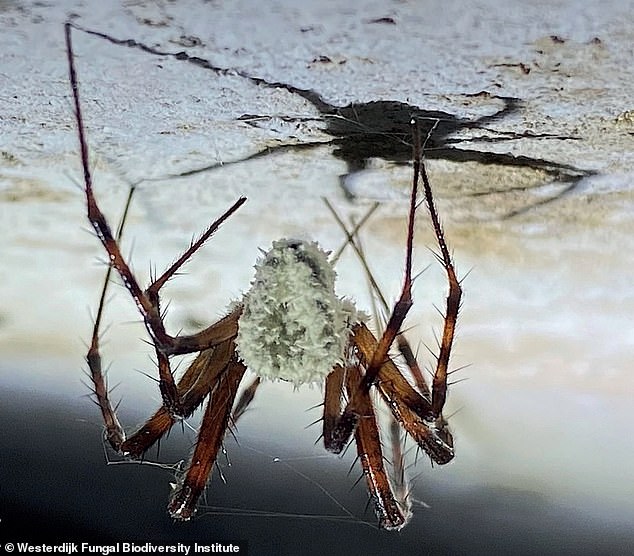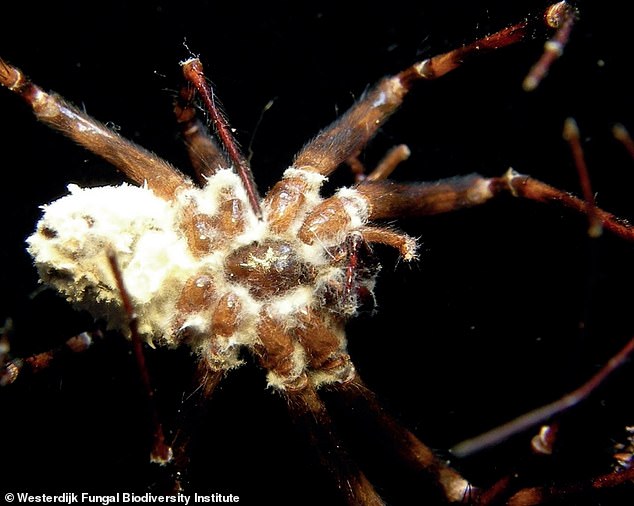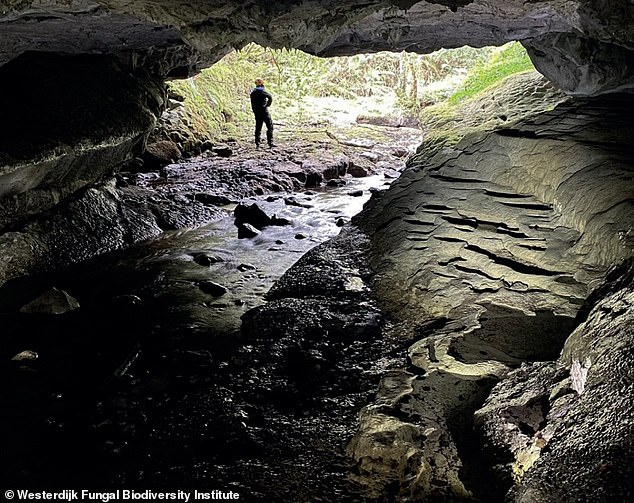A mysterious fungus is turning cave-dwelling spiders into real-life ‘zombies,’ consuming their organs and taking control of their behavior.
Known as Gibellula attenboroughii, the fungus attaches to the spider, invades its body and devours it from the inside out.
It then manipulates the spider’s brain chemistry, altering dopamine levels to force the insect out of its web and into the open, where it ultimately dies.
Afterward, the fungus sprouts fruiting bodies from the corpse, releasing spores to infect new spiders and continue its deadly cycle.
Researchers said it is difficult to determine how long the zombie spiders survive, but some estimates suggested they may live for up to three weeks.
The infected spiders have been found in parts of the US, the UK, Russia and other places around the globe.
Scientists stress that G. attenboroughii poses no threat of turning humans into zombies like in the popular video game-turned-HBO series ‘The Last of Us,’ where a fungus infects people, takes control of their minds, and sparks a global apocalypse.
João Araújo, a mycologist at the Natural History Museum of Denmark, said: ‘Infecting humans would require many, many millions of years of genetic modifications.’

Scientists discovered cave-dwelling ‘zombie’ spiders in Ireland. The infested creatures were all attached to the ceiling of the cave
The fungus was first brought to light during filming in 2021 of the BBC’s nature documentary Winterwatch in Northern Ireland, where an infected spider was spotted on the ceiling of an abandoned gunpowder store.
Dr Harry Evans, Emeritus Fellow at CAB International, an international nonprofit focused on agriculture and the environment, set out to determine its origins, determining that the spider host was the orb-weaving cave spider, Metellina merianae.
Evans and his team discovered the fungus lurking in cave systems in both Northern Ireland and the Republic of Ireland, as well as on a related spider, Meta menardi, occupying different ecological niches within the caves.
Normally reclusive, the spiders abandoned their lairs and webs to die in the open, mimicking the behavior seen in ants infected by fungi in Brazil’s Atlantic rainforest.
Based on both its physical traits and genetic analysis, the fungus was confirmed as a new species and named G. attenboroughii in honor of broadcaster and natural historian David Attenborough, who laid the groundwork for the modern nature series during which this species was first discovered.
Evans told Live Science the fungus penetrates the spider’s body and invades its hemocoel, the cavity that carries the invertebrate’s bloodlike fluid.
Once the host is lured from its lair, G. attenboroughii releases a toxin to kill it, then produces antibiotics to preserve the body as it mummifies.
The fungus drains the spider of nutrients and, under the right conditions, such as high cave humidity, sprouts long stalks from the corpse to release spores and spread the infection.

The fungus hijacks the spider’s brain chemistry to drive it out of its web to die, then grows fruiting bodies from the corpse to release spores and spread the infection

Scientists tracked the fugus to a cave in Ireland, where the saw infected spiders crawling on the ceiling and walls
The study, published this year, revealed a hidden diversity of parasitic fungi in the British Isles, suggesting many more species remain undiscovered. Fungi are one of the five kingdoms of life, alongside plants, animals, protoctista and monera.
‘There’s a lot more fungi to find,’ Evans said. ‘The fungal kingdom could be up to 10, 20 million species, making it the biggest kingdom by far, but only one percent have been described.’
Earlier this year, landscaper Gareth Jenkins was lifting a deck in a London garden when he spotted what appeared to be a large ball of cotton wool hanging underneath. On closer inspection, he discovered something far more chilling: it was crawling with legs.
Jenkins told the Wall Street Journal that the spiders were clumped in groups, appearing as if they were frozen in ice.
‘Their legs were curled up in a horrible crow position as if they were going to jump on my face,’ he said.
Thousands of miles away in Anapa, Russia, Simon Butenko reported seeing zombie spiders in his parents’ wine cellar, first thinking they were moldy berries.
‘What was especially creepy was that these spiders were hanging at head height,’ he said.
Ben Mitchell, an amateur naturalist and photographer, told the WSJ that his first zombie spider encounter was in the Scottish woodland in July 2024.
‘I saw this amazing candyfloss thing stuck to the underside of a leaf,’ he said. ‘It had a membrane of threads around it holding it in place, and all I could see of the spider was its toes sticking out.’











